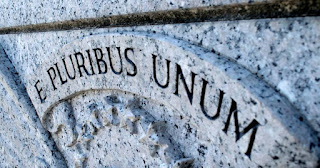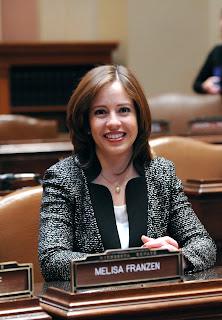 Emerging conventional wisdom among Democrats, pundits, and political scientists is that the Republican tax bill is a potential political disaster for the Republicans, threatening their control of Congress in 2018. This wisdom may be correct but it may also be besides the point. Conventional wisdom assumes the goal of the Republicans is to win re-election in 2018, but what if that is not true? What if, instead, the vote was ideological not strategic, and that the longer term plan was simply to dismantle the welfare state? If that is the case, then losing the battle for Congress to win the ideological war on government is worth it for Republicans.
Emerging conventional wisdom among Democrats, pundits, and political scientists is that the Republican tax bill is a potential political disaster for the Republicans, threatening their control of Congress in 2018. This wisdom may be correct but it may also be besides the point. Conventional wisdom assumes the goal of the Republicans is to win re-election in 2018, but what if that is not true? What if, instead, the vote was ideological not strategic, and that the longer term plan was simply to dismantle the welfare state? If that is the case, then losing the battle for Congress to win the ideological war on government is worth it for Republicans.It is beyond received wisdom that political scientists and pundits think that the most important value motivating members of Congress is reelection. David Mayhew’s 1974 Congress: The Electoral Connection, best articulates this argument. Congressional members are rational actors, motivated by re-election, and therefore will act in ways that maximize that goal. Similarly in a representative democracy the assumption is that unpopular acts by Congress will be electorally punished and therefore congressional members will act in ways that serve constituent interests. This is the logic of Richard Fenno’s Home Style and of former House Speaker Tip O’Neill’s quip that “all politics is local.” Yet this claim assume that voters are rational and informed and that representatives are solely motivated by the electoral connection. But what if all is not true, what if voters are not rational and informed and that ideology trumps the electoral connection, what then?
First, there is significant evidence that the tax bill was bad politics. An NBC/Wall Street Journal polls suggests nearly two-thirds of Americans see the tax plan as benefiting the wealthy and corporations. Various polls see about half the public disapproving of it. Other polls point the public seeing Trump bad for the economy, or give him or Congress low approvals. And in a generic congressional poll as reported by the Washington Post and New York Times, Democratic control of Congress is preferred over Republicans by a 56%-38% or an 18% lead. This lead is greater than in 2006 when Democrats took control of Congress or in 2010 when Republicans regained majorities. Such a lead in consistent with the makings of a wave election in 2018.
Republicans will counter that once people start getting their checks support for the tax plan will grow. Yes the tax plan may grow more popular but the 1981 and 1986 Reagan tax plans did little for the GOP, as was the case with the Bush’s in 2001 (although 9/11 makes it hard to sort out its effect), and Obama got little credit for the Affordable Care Act or even the 2009 stimulus bill. Tax cuts, no matter how bad or popular, have more measured impacts on voting behavior. Republicans should not count on it as their 2016 electoral savior, nor should Democrats see it as their pathway to congressional majorities.
Politically there are also other reasons to question how damaging the tax cuts will be to Republicans. With political geographic sorting, gerrymandering, and the high percentage of safe seats, chances of a major wave are less than in 2006 and 2010. There is powerful political science evidence that indicates that the 2010 Census and redistricting has produced far more gerrymandered seats now than in previous decades, diminishing the chances of a significant number of flipped seats. America is also far more polarized today that in 2006 and 2010, suggesting also that even if Trump’s base is hurt by the tax cuts, they might stick with him in 2018, even if the Democrats come up with a credible counter-narrative about what they would do if elected (they have yet to do that). Finally, it is simply wrong to extrapolate from generic congressional disapproval to the concept that voters dislike their member of Congress. Political scientists call this the ecological fallacy. We see a variation of that daily in that voters give Congress low approval ratings but love their member.
Let’s ignore the politics of the tax plan. Concede for the sake of argument that it is a bad tax policy. What then? For it to have electoral significance requires voters to be informed about the plan and that they act rationally based on their pocketbooks. But neither may be true. Voters may be misinformed or vote ideologically, or Republicans might be able to frame the tax cuts in ways that convince their base and swings to support Republican candidates nonetheless. This is the “What’s the matter with Kansas?” thesis.
But more powerfully, what if Republicans know the tax plan will hurt them in 2018, What then? Much of the polarization and partisanship is over the most basic question in politics–Why government? Here the dispute is over whether government should exist at all, with a secondary question being what should government do. It is at these two levels that the political debate today is centered. It is over whether the government or market should make basic decisions about who has health care or who is rich or poor. It is a debate about the merits of the welfare state and whether it is the job of the government to intervene beyond the most basic aspects of market fundamentalism or Social Darwinism.
Today’s polarization is far different than political disagreement ten, twenty, or thirty years ago when the basic premises of why government or the welfare state were not questioned. Debates then were about lower-ordered questions regarding the best way to make government work to eliminate poverty or homelessness. This is where Democrats still want to debate, but this is not the case for the Steve Bannon’s of the world, Donald Trump, and perhaps many Republicans. They are questioning the very purpose of the state, and for whose benefit it should serve.
Was it the tax vote worth it? Maybe yes. Even if they lose majorities the Democrats will have limited ability to reverse much of what was done. Trump or Pence will still be president and simple reversal of the Trump-GOP tax plan and other policies are not enough. Lacking a grand plan or narrative, what just happened will have larger, longer-term structural impact on the United States and the world. If in fact that is the case, the vote was worth it. This suggests then that when it comes to ideology, Mayhew may have it wrong. More importantly, Mayhew and the electoral connection thesis may be dated. It was perhaps a product of an era of consensus in the 1970s that no longer exists, suggesting that perhaps it is the ideological connection that drives much of contemporary politics, thereby rendering it besides the point whether the tax bill costs Republicans their majorities.













